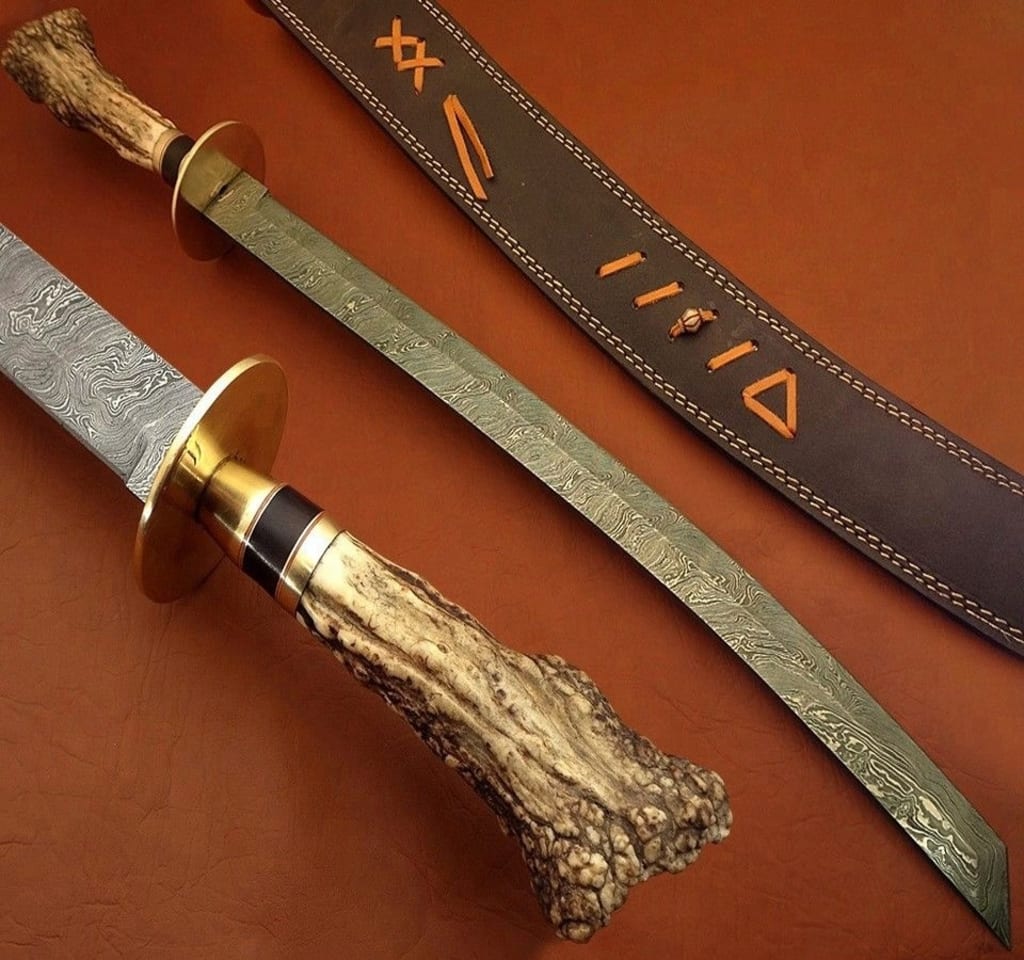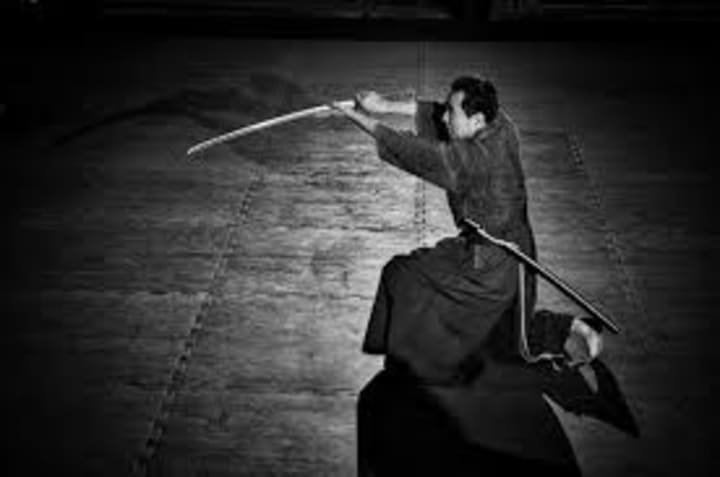What is Kenjutsu?
Find out what it is, its history and the techniques of the samurai fighting style

The Kenjutsu is a discipline that combines spiritual, mental, and physical. More than a balance between body and mind, more than having it is necessary to have great physical strength.
It is a very profound teaching that deals with the physical-religious aspect with clear influences from Shintoism, Confucianism, and Zen Buddhism.
Kenjutsu means "sword techniques" and encompasses different fighting methods of samurai and ninjas where Damascus swords were used as weapons.
What is Kenjutsu?
Among the Japanese martial arts is Kenjutsu, combat with Japanese swords or sabers between great warriors of ancient Japan. This was a practice created by samurai and also performed by ninjas.
The Kenjutsu has kept intact all the teachings that taught the samurai in ancient times in everything related to the fight with sabers, with the only difference that to avoid accidents is used a wooden sword. It should not be confused with Kendo since this is a more modern and sporty discipline.
The suit used to practice Kenjutsu
The traditional clothing used to practice this Japanese discipline is called "gi," a suit made up of two navy blue pieces, a kind of kimono, and pants called hakama. Sometimes an obi is used close to the waist that holds the kimono.
The hakama for men are quite wide pants with pleats that give a skirt appearance, and in the case of the female hakama, it is a skirt and the wrinkles, which are generally seven, represent the seven virtues that every samurai should have.
History of Kenjutsu
The Kenjutsu is a fighting technique that is always displayed and begins with the sword unsheathed and inspiring aggression. The first teaching of this discipline was in 800 AD, and since then, around 1,200 schools and styles have been documented.
Often, those who practice Kenjutsu have questioned the kind of understanding that can be achieved by studying and practicing with the sword.
Kenjutsu is considered a martial art of war (jujutsu), which is why in the schools where it is practiced, they are very reserved with strangers in terms of the techniques used since they were initially the training base of a warrior.
The Kenjutsu dates back to the katana's emergence, which was the first sword with a very slight curve and a single edge. Before that, what most resembled a sword was straight, double-edged blades.
The use of this new instrument (katana) made combat more refined, and thanks to the constant civil wars, it was perfected.
In the 13th century, the term Kenjutsu began to be used by samurai to identify all the disciplines where the sword was used as a weapon.
Although the first styles of Kenjutsu date back to the 15th and 16th centuries, it had its most significant expansion in the Edo period (16th to 19th centuries). More than 500 styles were consolidated, and safer training conditions.
After the martial arts were banned in 1868, this type of training stagnated, and it was not until 1873 that Sakakibara Kenkichi, a swordsman of the time, held a public exhibition.
Because the Allied Forces later lifted the ban, martial arts became famous as part of Japanese cultural heritage and sometimes as a competitive sport.
Kenjutsu Techniques

Kenjutsu is a type of fencing of the Japanese samurai art that is currently practiced around the world as a sport without restrictions or scoring systems in the form of combat full of rituals, history, and precise striking techniques with a balance between the traditional and the limitations of practicing it as a sport.
Fighting stances
Kenjutsu used a five-way primary battle: sword raised, sword side, blade pointing downward, sword horizontally, and canter. All are linked together by a chain of movements so that the swordsman adapts to any battle conditions.
Thanks to these postures, it is possible that there is muscle memory and motor learning since the body works repetitively.
Quick attacks
In this series of attacks, one hand must remain on the sword's pommel and the other on the crest of the blade. Through this posture, accompanied by variations, blows with the katana can be performed. These types of attacks do not require feints with various starting positions. The goal is to make quick attacks to the wrists, throat, neck, and groin.
Front lunge
This is one of the main techniques in Kenjutsu, and it consists of being the first to attract the opponent to provoke the attack. Usually, you need to fake approaching intent and then make a two-handed forward attack.
Cleaning the sheet before coating
The katana should be rotated over the head circularly and rapidly before coating the blade. The sword should be circled, and the tip slid through the opening in the sheath. Many rituals involve the proper handling of the blade. For example, it is also customary for the two arms to move together while sliding the blade with the right hand and the left blade.
The Double Sword
Some swordsmen fight with two swords allowing a technique that doubles the offensive and defense capacity but requires a lot of training since while one sword blocks the opponent's attack, the other is used to attack.
To practice Kenjutsu, as it is sword fighting training, it is always best to turn to a qualified teacher since different styles are used, but the general rule is based on kata and with a complement of combats.
In this type of discipline, there are no colored belts that determine at what level the participants are. Instead, licenses or makimono are issued, a roll of paper or silk traditionally used in Japan. It is read horizontally written in ink with excellent calligraphy or with drawings.
Kenjutsu Katas
Kata is a Japanese word that initially describes a series of established movements that used to be practiced alone or in pairs.
Currently, kata is associated with martial arts and practiced in traditional Japanese art school as kabuki and schools tea ceremonies.
In Kenjutsu, the katas are a style based on handling real weapons and dangerous edge. Making the slightest mistake can cause serious injury to the opponent, so that when the kata practiced in a partner should be slowly and very carefully, using protective armor.
In general, in this training, a wooden Damascus sword is used very similar to the katana, called bokuto, and in the Kenjutsu style, there are certain specific measures in terms of length, width and curve.
There must be excellent coordination with time and distance between kata practitioners. In high degrees, movements are performed at high speed, and injuries are avoided through sensitivity and coordination.
Katana is the true essence of martial arts such as Kenjutsu, where movements currently prohibited in sports combat are appreciated, such as blows below the waist or delicate areas such as the groin or joints since they can cause serious injuries, can even cause death.
The essence of the practice of Kenjutsu and its values have remained throughout the years until today to convert modern warriors with the ability to face different challenges of contemporary life, seeking balance, since they are constant struggles and in some cases brutal wars and thanks to a samurai training it will be possible to face each challenge.
About the Creator
Enjoyed the story? Support the Creator.
Subscribe for free to receive all their stories in your feed. You could also pledge your support or give them a one-off tip, letting them know you appreciate their work.





Comments
There are no comments for this story
Be the first to respond and start the conversation.